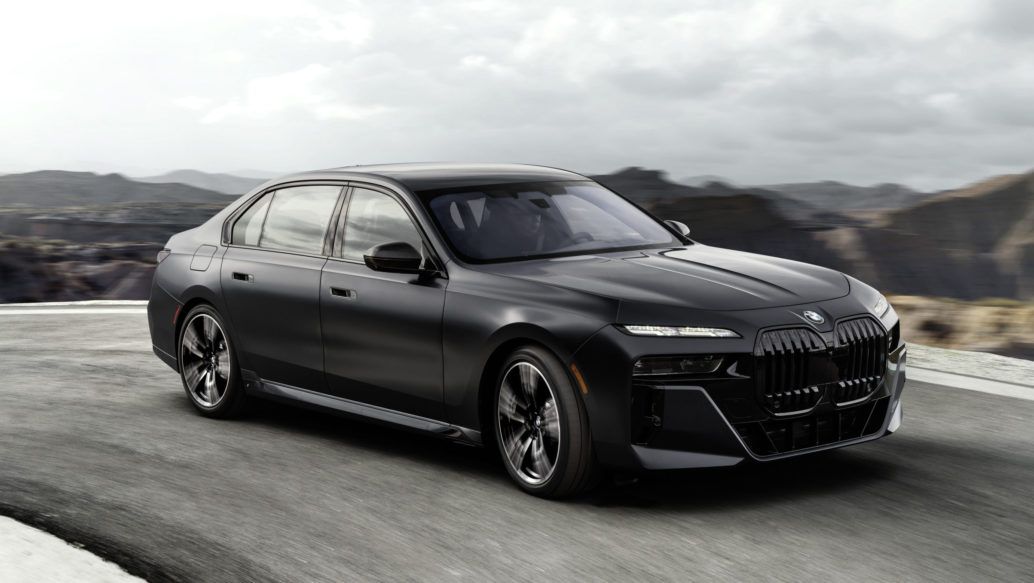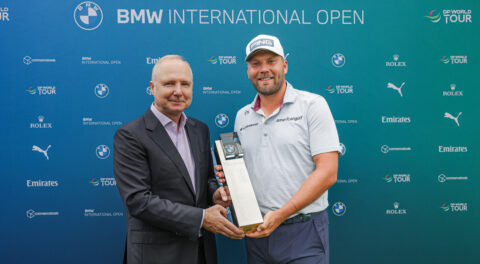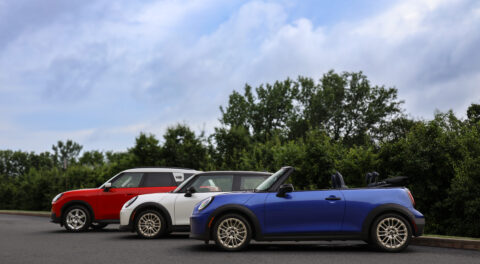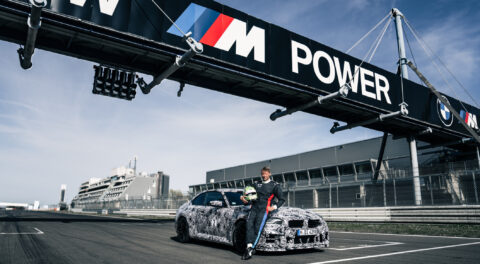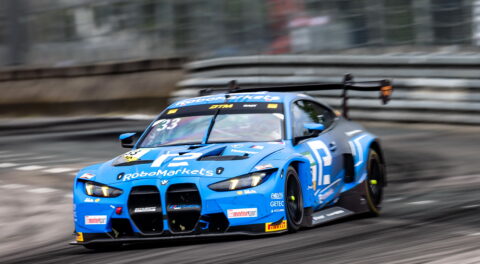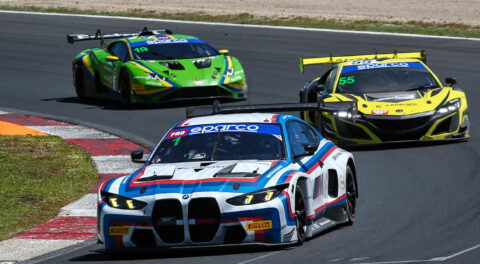BMW has unveiled the seventh-generation of the iconic 7 Series, and the big news is that the i7 xDrive60 electric model is here, and the previously range-topping V12 model is gone. On the front end, you’ll find BMW’s new luxury vehicle design language, which includes a big kidney grille and split headlights with daytime LED running lights up top and the actual headlights below, hidden behind tinted lenses that allows them to blend into the body depending on the color. Other highlights include the availability of the 31-inch 8K rear theater screen that BMW showed off at CES in January, along with a 48-volt mild-hybrid system for the internal combustion engine-powered models, and an optional highway assistant that handles the driving for you up to 80 mph.
Since its introduction in the late 1970s, the 7 Series has been the technological flagship of the BMW lineup, often times being the first recipient of new technologies, design language, and other concepts that are subsequently democratized throughout the lineup as other series and models are updated and new generations debut. The winds of change are gusting, though, and it can be argued that models like the iX and X7, the latter of which outsold the 7 Series in the U.S. by a factor of nearly three to one in 2021, are BMW’s new technological flagships. Sales figures and technology aside though, the BMW 7 Series has perpetually been known for its presence, and the latest generation doesn’t disappoint in this department, regardless of what you think of the new design.
The initial U.S. press release for the seventh-generation 7 Series (G70/G71) includes three models, and none of them are as fast as the outgoing V12-powered M760i which could sprint from zero to 60 mph in 3.5 seconds. To start, the lineup will include the six-cylinder 740i, the V8-powered 760i xDrive, and the all-electric i7 xDrive60, but more models are coming later on. They include the 750e six-cylinder hybrid, and two variants from BMW M, the M760e xDrive, also with a six-cylinder hybrid drivetrain, and the electric i7 M70 xDrive, which will be the leader of the range. Finally, both an Alpina and an armored version are also in the pipeline.
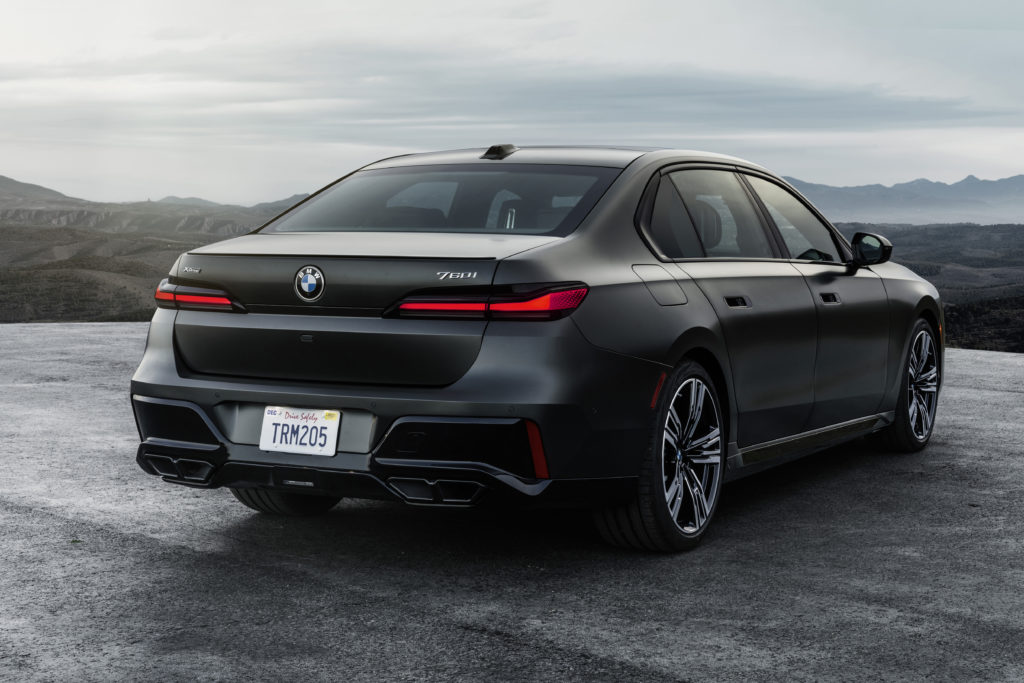
The 740i comes with BMW’s updated B58TU2 turbocharged six-cylinder engine, which develops 375 horsepower and 383 pound-feet of torque. When boosted with the assistance of the 48-volt mild-hybrid setup, total system output in terms of torque is the equivalent of 398 pound-feet, and the 740i can go from zero to 60 mph in five seconds flat. The updated version of the B58 inline six develops slightly less horsepower but more torque than the previous range-topping version of the B58, but it’s important to note that this likely isn’t the most powerful version of the B58TU2 to be introduced.
Highlights of the engine update include the use of the Miller cycle as it applies to combustion, thanks to redesigned intake ports and combustion chambers, along with the introduction of an ignition system featuring an active coil with integrated electronics according to BMW. Turbocharging and intercooling have been optimized, and the Valvetronic fully variable valve control system gains enhanced capability thanks to switchable exhaust rocker arms allowing for the interruption of of gas exchange, thus reducing frictional engine torque on overrun and increasing the amount of energy that can be recovered during coasting or braking. Previously driven by oil, the Vanos variable camshaft timing system now works electronically, while the cylinder head and exhaust manifold are integrated together, as they were on certain versions of the first B58 technical update. In addition to the high-pressure direct fuel injection system found on all current BMW engines, a low-pressure system also delivers fuel into the combustion chambers by way of the inlet ports, reducing what BMW refers to as particulate formation, or what’s more commonly known as carbon buildup, which results in reduced performance and heightened emissions.
The lineup also includes a 750e hybrid, which, as the model designation denotes, slots between the 740i and the 760i with its six-cylinder hybrid drivetrain. The model is likely to arrive in 2023 and specs include approximately 490 horsepower, 516 pound-feet of torque, and a zero-to-60 time of 4.9 seconds, or slightly faster than the six-cylinder 740i.
The 760i xDrive is, as the model designation indicates, available exclusively with xDrive all-wheel-drive, and is powered by a 4.4-liter 536-horsepower BMW S68 M V8 that develops 553 pound-feet of torque. The few details we know of regarding the new S68 M twin-turbocharged V8 can be found in our article dedicated exclusively to the new engine, but in the 760i, it allows for a zero-to-60 acceleration time of 4.2 seconds and boasts improvements in the way of thermodynamics such as a cross-bank exhaust manifold and external engine cooling, along with improved turbocharging with a blow-off valve, an oil pump featuring a new design, and a lightweight oil sump. The 760i is particularly interesting in that it isn’t an M Performance model, but it uses a version of an M engine, and has quad exhaust tailpipe finishers not unlike those found on the X7 M60i, which uses the same V8.
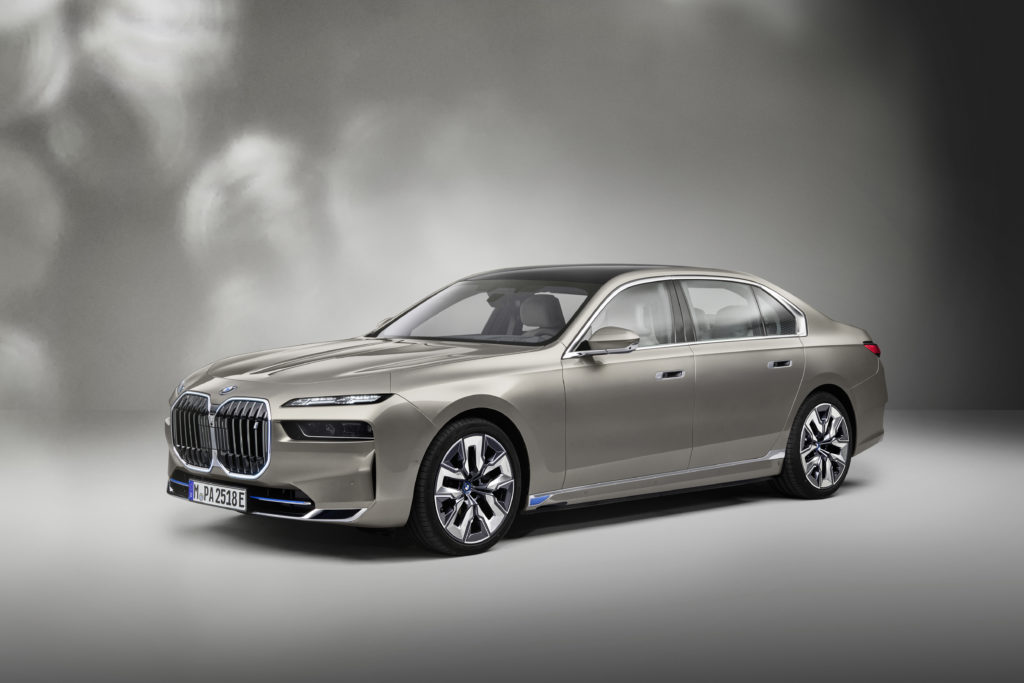
The model BMW has spent the most time talking about over the past year or so is the i7 xDrive60 (pictured above) which is billed as the world’s first all-electric luxury sedan. The i7 xDrive60 uses two of BMW’s fifth-generation eDrive motors and has combined system output equivalent to 536 horsepower and 549 pound-feet of torque. If the horsepower figure sounds familiar beyond the 760i, that’s because it’s the same as the i4 M50, but the i7 xDrive60 is a significantly larger vehicle and has a larger battery allowing for a range of up to 300 miles compared with 245 for the i4 M50. The footprint and battery of the i7 xDrive60 also mean it’s going to be on the heavy side, and BMW quotes a zero-t0-60 acceleration time of 4.5 seconds, a fair bit behind the gasoline-burning 760i.
That’s where the M760e xDrive (pictured below) slots in the lineup, with a six-cylinder hybrid drivetrain boasting total system output equivalent to 571 horsepower and 590 pound-feet of torque. BMW says the M760e will be introduced as early as next spring, and some of the specific details include the electric motor being able to generate an extra 40 horsepower on a temporary basis, M styling for the interior and exterior, and an exhaust system featuring twin tailpipe finishers with unique geometry.

Due to arrive later in 2023 is the range-topping i7 M70 xDrive. The i7 M70 will be the most potent model of the lineup in terms of performance, with combined system output equivalent to more than 600 horsepower and max torque of 737 pound-feet coming from its two electric motors. According to BMW, the i7 M70 xDrive will be capable of accelerating from zero to 60 mph in less than four seconds, but they also note that the output and performance figures are based on the model’s current development stage. Either way, the outgoing V12-powered M760i xDrive (which hits 60 from a standstill in 3.5 seconds) left a large and foreboding pair of shoes to fill.
The cabin of the new 7 Series is where technology takes center stage, with several new items making their first appearance. Some of the headliners include the aforementioned 31-inch 8K theater screen with Amazon Fire TV streaming, along with the glass panel which stretches across the instrument panel that offers illumination in the driver’s choice and touch controls for things such as the climate control vents, the glovebox release, and the hazard lights. This type of glass interface is mirrored on the door panels, which feature 5.5-inch color control displays for both the front and rear passengers. iDrive operating system 8, which first arrived on the iX and i4, is also present, with two large, driver-oriented screens acting as the control display (14.9 inches) and the gauge cluster (12.9 inches).
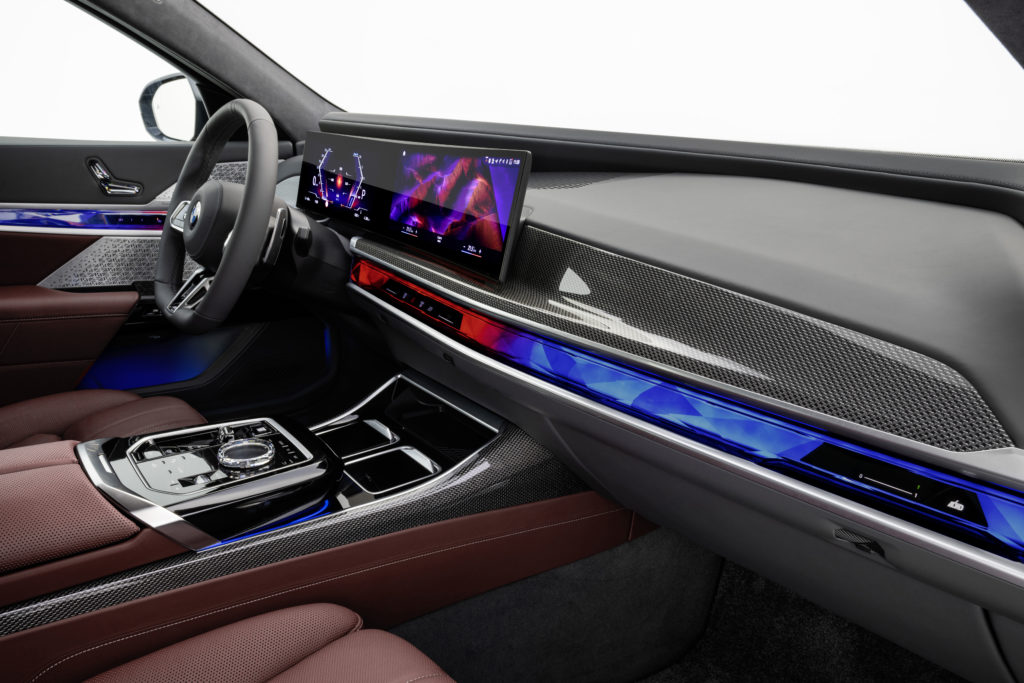
Elsewhere, you’ll find additional examples of influence from the iX, including the availability of open-pore wood. Cashmere wool has also been added to the upholstery choices and is paired with BMW Individual Merino leather. While we’re on the subject of the seats, the cabin looks more inviting and luxurious than ever, and the pattern of the stitching on the upholstery appears incredibly plush and comfortable. In the rear, the passenger side seat can be reclined with a calf rest and heel rest extending from the back and front seats respectively to ensure an optimal seating position. The front and rear seats are also available with an optional massage function, along active with heating and cooling.
The standard stereo setup is the 655-watt Bowers & Wilkins Surround Sound system, which makes use of a seven-band equalizer and eighteen speakers behind precision-etched metal grilles. The optional Bowers & Wilkins Diamond Surround Sound system is particularly impressive, with a 1,965-watt amplifier driving up to 36 speakers. The optional system also has a seven-band equalizer but with microphone-assisted sound control, features speakers that are integrated into the headliner and headrests of the front seats and outer rear seats, and a four-dimensional audio function with vibrating elements in the front and rear seat backrests.

Additional items of note on the new 7 Series include the driver assistance technology suite, which now offers a mode that will drive for you on the highway at speeds of up to 80 mph as long as you keep your eyes on the road, along with the presence of standard two-axle air suspension with electronically controlled dampers. The rear axle subframe also uses hydraulic mounts to enhance ride comfort and further isolate occupants from the road. BMW’s integral active steering uses the rear wheels to turn up to 3.5 degrees, decreasing the turning radius of the 7 Series by approximately 2.5 feet. Finally, a new BMW individual two-tone exterior paint finish is available, and it looks like something previously reserved exclusively for Rolls-Royce.
There are too many options, packages, technologies, and other items about the new 7 Series to cover in a single article, but we hope to learn more about how they all work and how much they’ll cost as we approach the vehicle’s introduction. The U.S. market launch of the seventh-generation BMW 7 Series is scheduled for the fourth quarter of this year. The 740i has a starting MSRP of $93,300, while the 760i xDrive starts at $113,600, and the i7 xDrive60 at $119,300, all less destination. The 750e xDrive and M760e xDrive hybrids are due to launch in the Spring of 2023 while the i7 M70 will follow them in terms of availability later the same year.—Alex Tock
[Photos courtesy BMW AG.]

